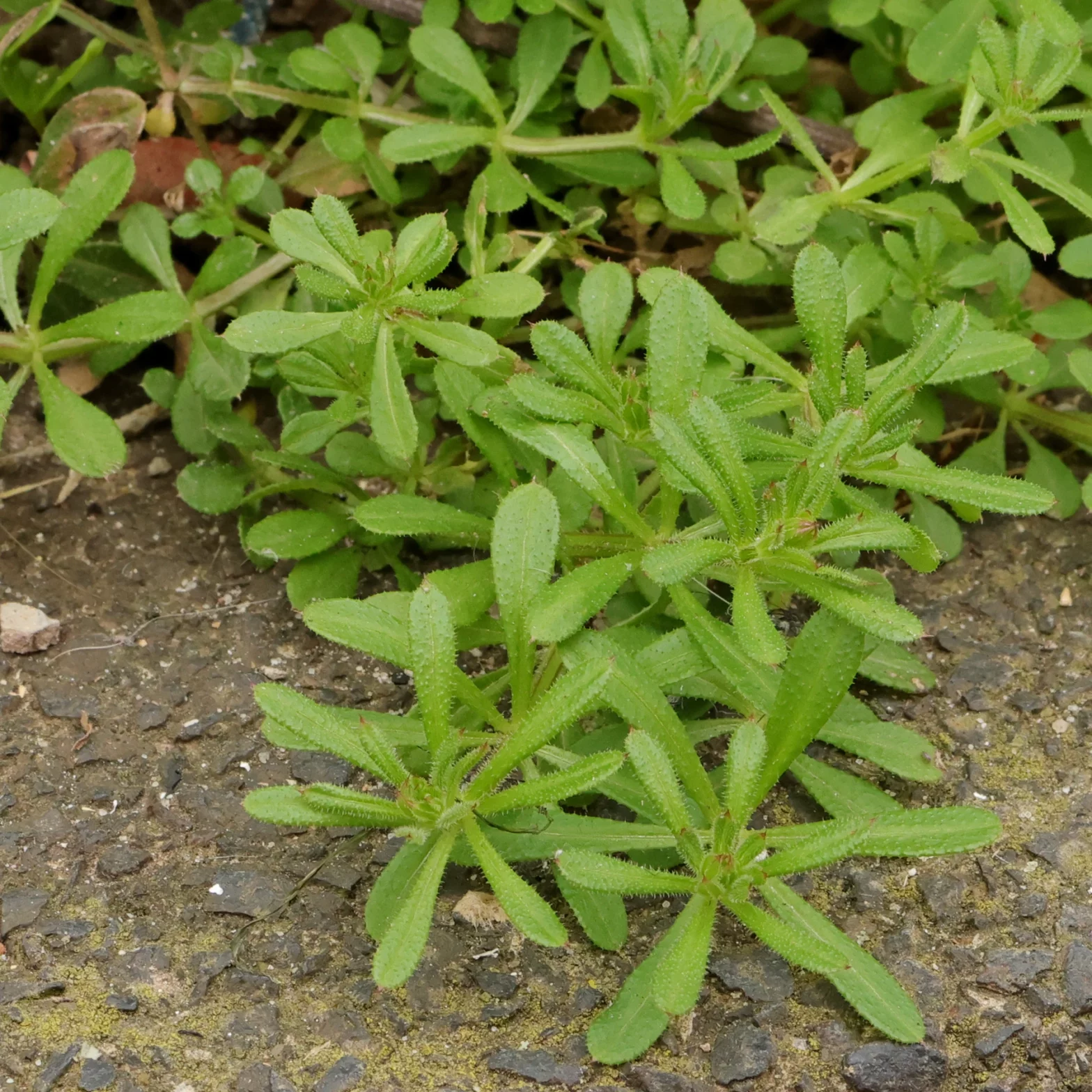The leaves of Galium aparine (cleavers, catchweed bedstraw) can be up to six centimetres in length. They are arranged in a circle around the stems, covered with fine hairs and feel sticky when touched.
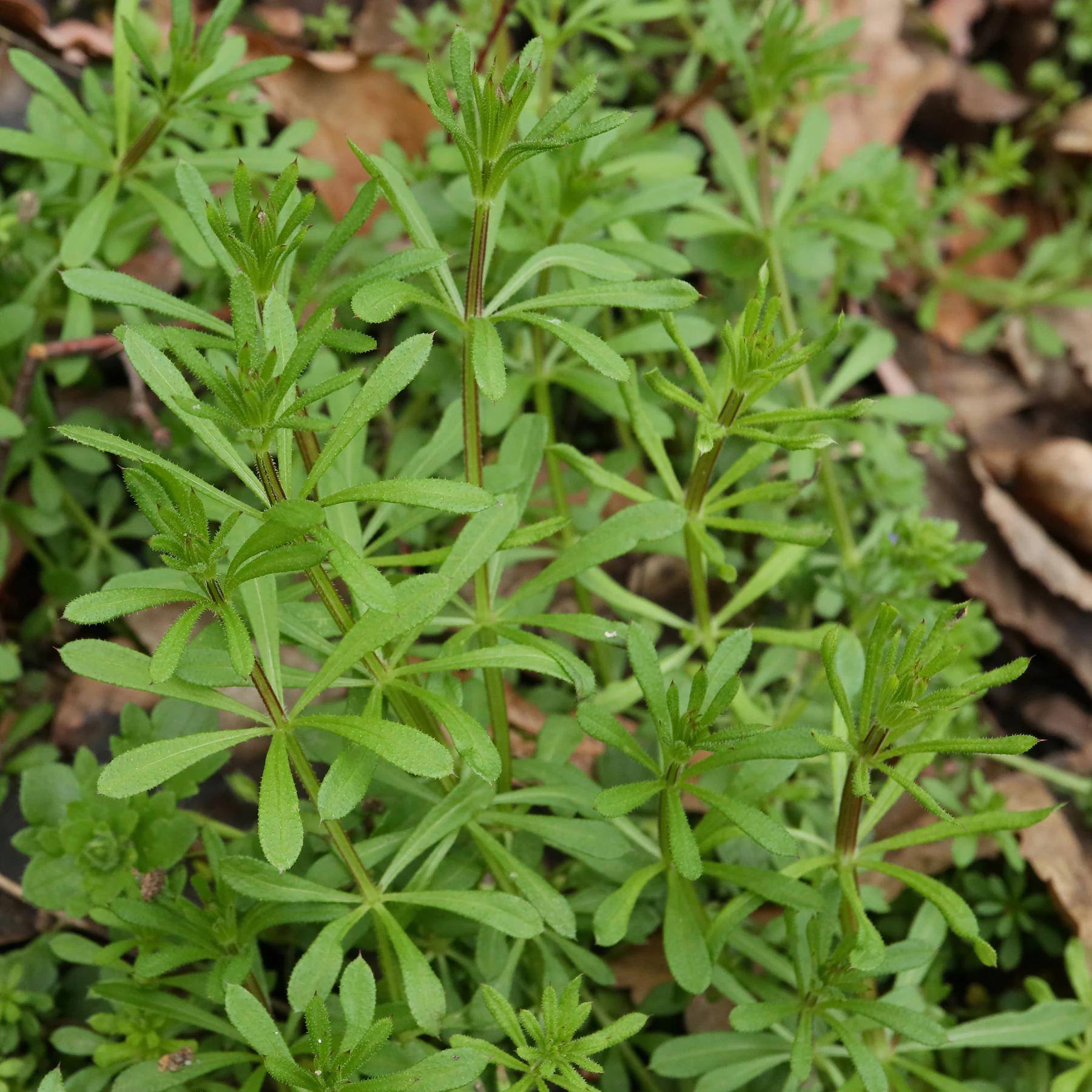
Habitus & biology
Cleavers can grow as an annual if its seeds germinate in spring. Or as an overwintering annual, when they germinate in autumn.
The stems can reach lengths of over one metre and grow prostrate or erect.
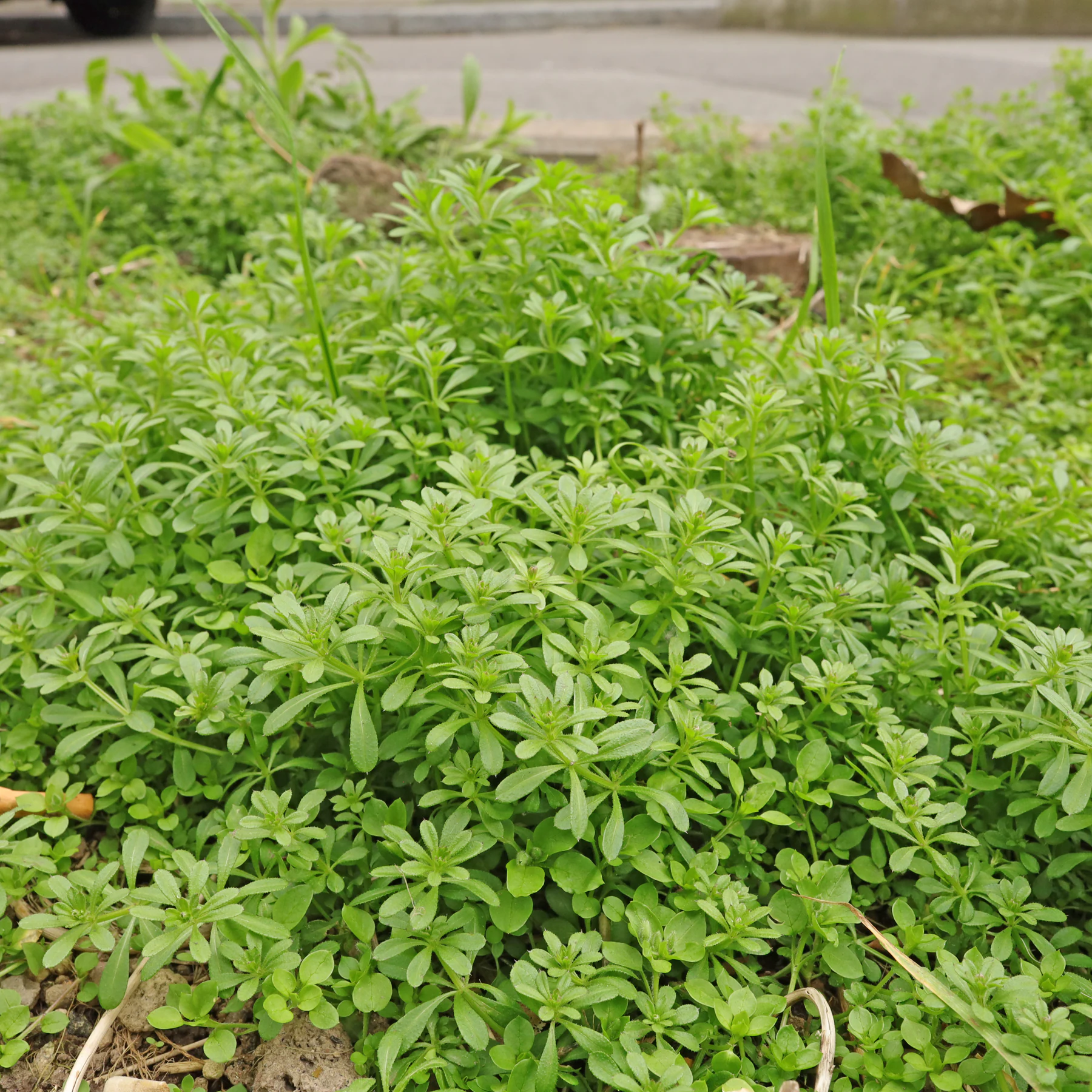
The fruits are burs. They are covered with hooks and are spread by animals, in whose fur they become entangled.
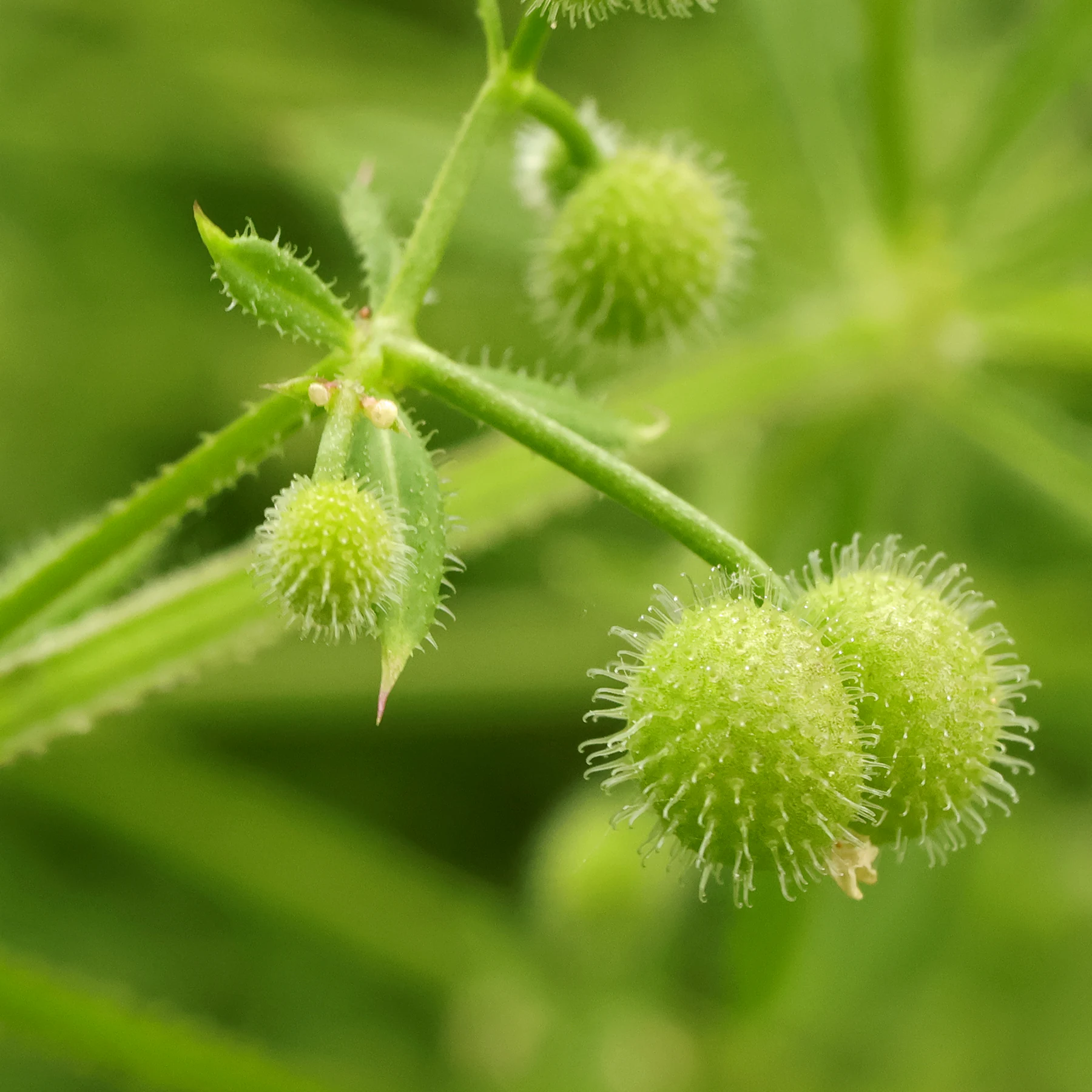
Origin & habitats
The original distribution area is in Africa, Asia and Europe. As an introduced species, cleavers can also be found in other regions and is therefore native to all continents (source).
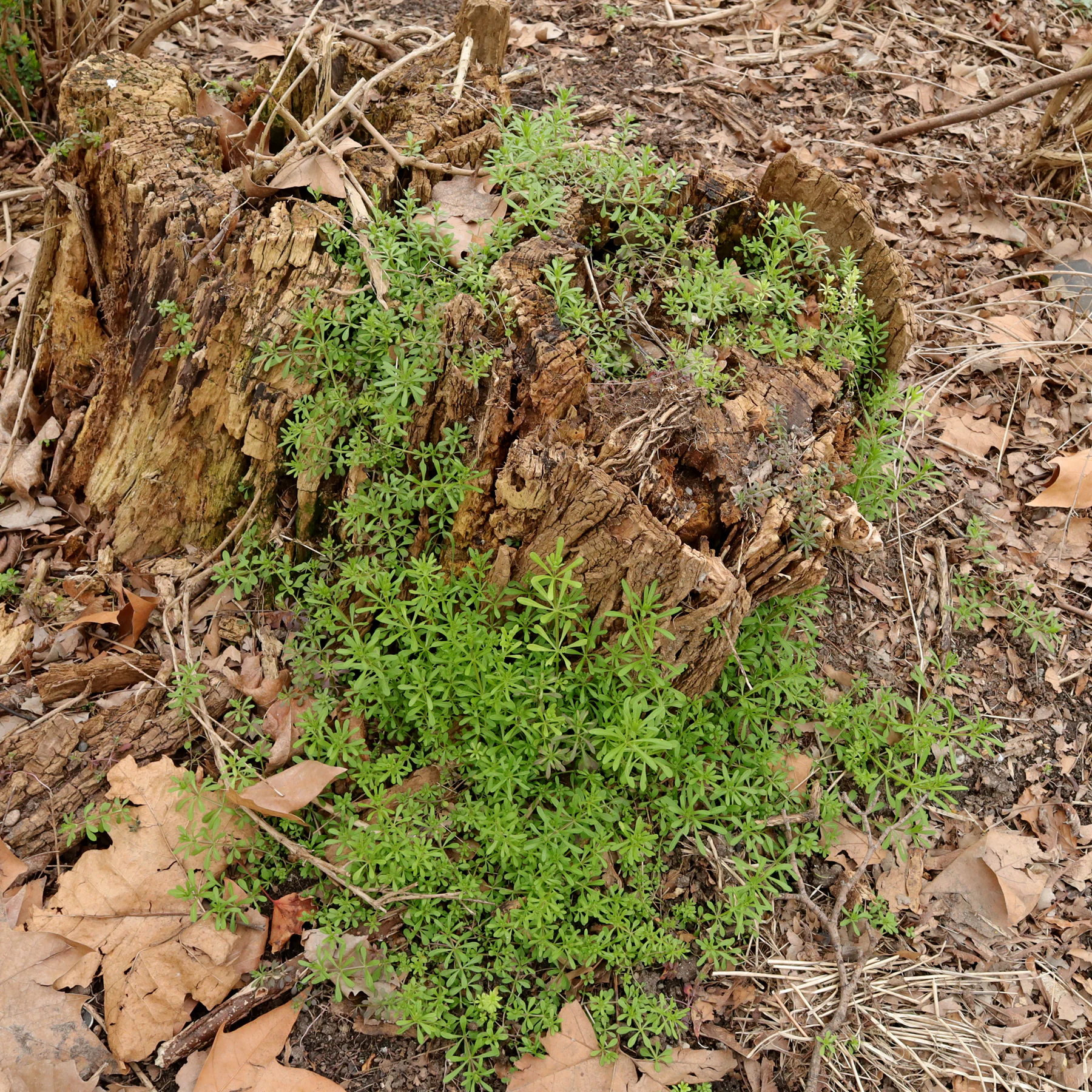
Galium aparine can survive with low light conditions and grows in forests, in front of or under shrubs, on embankments, in parks, gardens, on roadsides and sometimes also on walls.
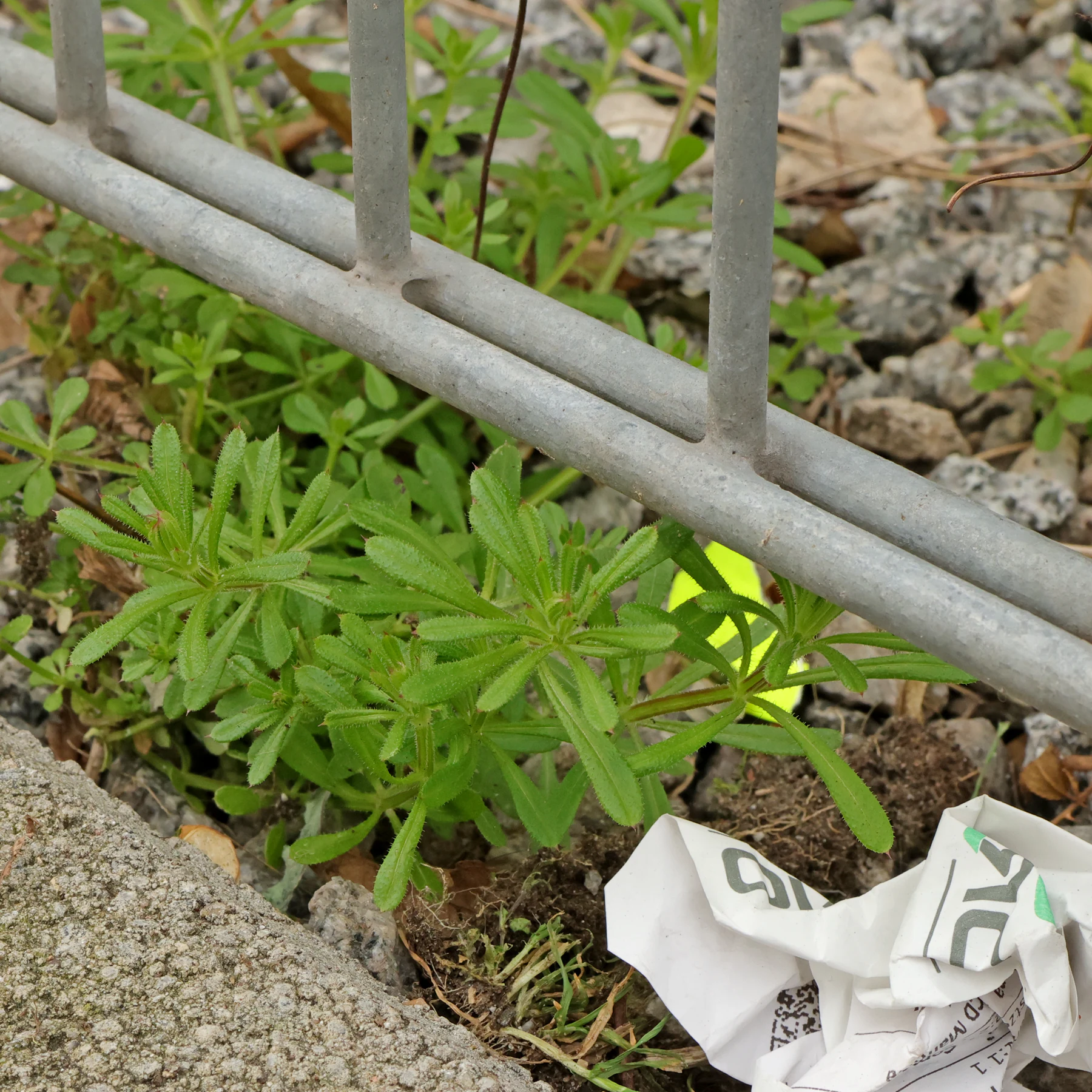
Botany
Although the fruits look similar, cleavers is not related to the burdocks (genus Arctium). It belongs to the Rubiaceae family.
Galium aparine has a lot of common names like clivers, catchweed, robin-run-the-hedge, goose-grass and sticky willy (source).
